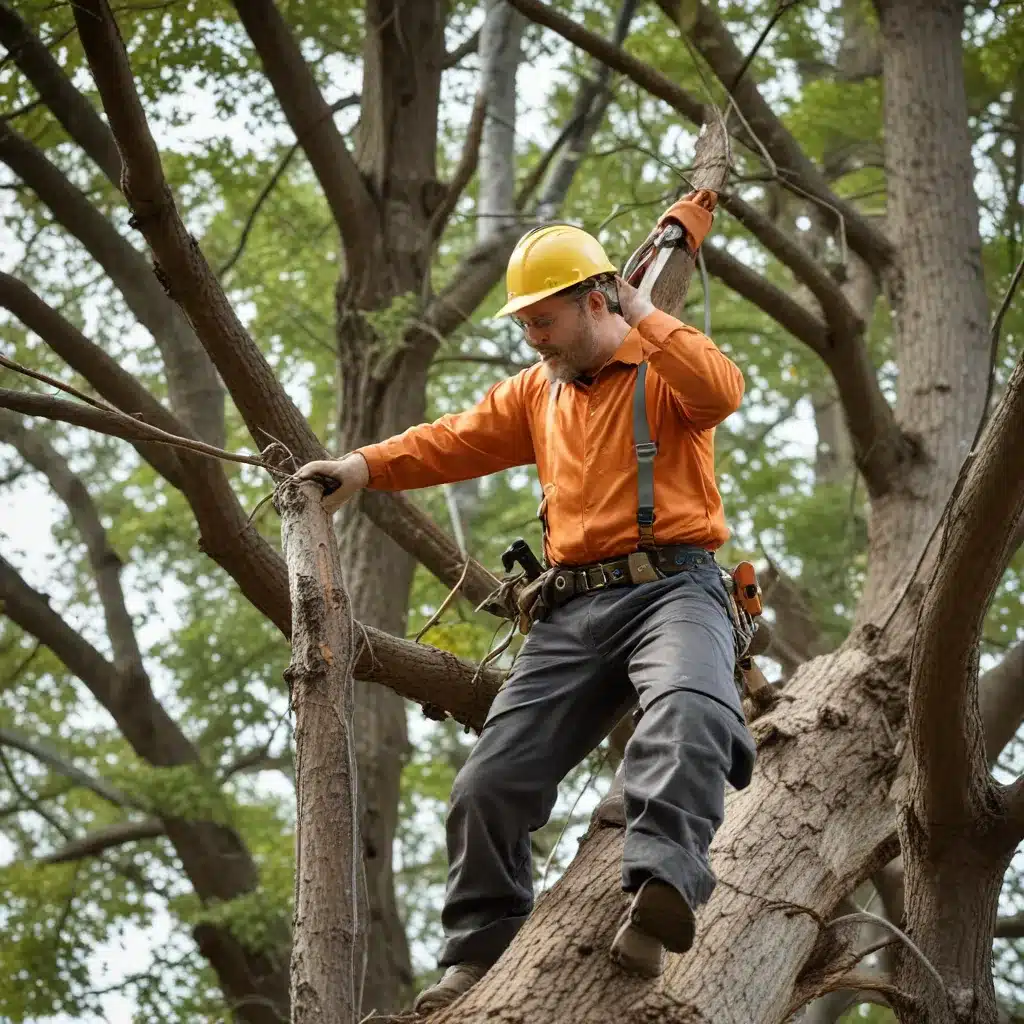
Maintaining a reliable power grid is a critical concern for utility companies and communities alike. One of the primary threats to consistent electricity service is the encroachment of vegetation, particularly trees, on overhead power lines. The consequences of trees coming into contact with utility infrastructure can be severe, ranging from momentary service disruptions to catastrophic wildfires. To mitigate these risks, TriCounty Tree Care advocates for a proactive, ecologically-minded approach to managing vegetation near power lines.
The Risks of Trees Touching Power Lines
When a tree’s branches or trunk directly contact a power line, it can create a dangerous situation with the potential for electrical conduction. This phenomenon allows electricity to flow through the tree, posing a significant electrocution hazard to anyone in proximity. The combination of moisture and electricity during inclement weather can exacerbate the danger, potentially leading to fires or other disastrous outcomes.
Beyond the immediate safety concerns, trees touching power lines are a leading cause of power outages. The interruption of electrical service not only causes inconvenience but can also result in economic losses and impact critical functions like heating, cooling, and medical equipment. Continuous contact between a tree and a power line can even lead to wear and damage to the infrastructure, requiring costly repairs and increasing the risk of future service disruptions.
Proactive Vegetation Management
To prevent the hazards associated with trees and power lines, utility companies and arboricultural professionals advocate for a proactive approach to vegetation management. This strategy encompasses a range of practices, including strategic tree removal and comprehensive pruning regimes.
Tree Removal
In situations where a tree poses a direct and immediate threat to power lines, the most effective solution is often complete removal. This approach is particularly warranted for species with a high mature height, extensive root systems, or a history of structural instability. By eliminating the tree entirely, the risk of electrical conduction, fire ignition, and power disruptions is greatly reduced.
When a tree is identified as a potential hazard, it is crucial to contact the local utility company. These organizations have specialized teams trained to assess the situation and execute the necessary tree removal safely. Attempting to remove a tree near power lines without the proper equipment and expertise can lead to catastrophic consequences, including electrocution.
Vegetation Management
In addition to targeted tree removal, utility companies often implement comprehensive vegetation management programs to maintain a safe distance between power lines and surrounding foliage. This proactive approach involves regular pruning and trimming of trees and shrubs, ensuring that branches do not encroach on the electrical infrastructure.
Professional arborists employed by utility companies or contracted tree care specialists possess the knowledge and equipment to safely execute these maintenance tasks. By following industry-standard arboricultural practices, they can selectively remove problematic limbs while preserving the overall health and aesthetic of the vegetation.
Ecological Considerations
While the primary objective of vegetation management near power lines is to ensure public safety and service reliability, TriCounty Tree Care also recognizes the importance of maintaining a sustainable and ecologically-balanced approach.
Arboricultural Best Practices
Our team of certified arborists adheres to the latest arboricultural standards and techniques when performing tree removal or pruning near utility lines. This includes minimizing the impact on the tree’s overall structure and health, as well as prioritizing the use of low-impact equipment and environmentally-friendly methods.
By employing integrated vegetation management strategies, we can strike a balance between mitigating risks to power lines and preserving the ecological integrity of the surrounding landscape. This may involve the selective removal of problem trees, the strategic pruning of branches, and the introduction of native, low-growing species that are less likely to interfere with overhead infrastructure.
Wildlife Habitat Protection
Trees and shrubs not only contribute to the aesthetic appeal of a community but also provide vital wildlife habitat. When managing vegetation near power lines, TriCounty Tree Care works closely with local environmental agencies to ensure that the removal or trimming of plants does not disrupt the homes and resources of local fauna.
In some cases, we may recommend the relocation of nesting sites or the incorporation of wildlife-friendly design elements into our vegetation management plans. By taking a holistic, ecologically-conscious approach, we can fulfill our responsibility to maintain a reliable power grid while preserving the natural ecosystems that enrich our communities.
Enhancing Public Safety and Service Reliability
The collaborative efforts of utility companies, arboricultural professionals, and engaged community members are essential in mitigating the risks posed by trees and power lines. By adopting a proactive, multifaceted strategy, we can significantly enhance public safety, improve the continuity of electrical service, and foster a sustainable, environmentally-conscious approach to vegetation management.
Risk Mitigation
Prompt identification and removal of high-risk trees, coupled with regular pruning and trimming, can dramatically reduce the likelihood of power outages and other hazardous incidents. TriCounty Tree Care works closely with local utility providers to maintain a comprehensive inventory of vegetation that may threaten power lines, allowing for targeted intervention and rapid response to emerging threats.
Improved Service Continuity
By prioritizing the management of vegetation near utility infrastructure, we can enhance the reliability and resilience of the power grid. Fewer service disruptions translate to improved quality of life for residents and businesses, as well as reduced economic impacts associated with outages.
Community Engagement
TriCounty Tree Care believes that fostering a collaborative relationship between utility companies, tree care professionals, and the local community is essential for the long-term success of vegetation management programs. We actively engage with homeowners, municipal authorities, and environmental organizations to raise awareness, provide educational resources, and facilitate the adoption of best practices for planting and maintaining trees near power lines.
By working together, we can create a safer, more sustainable, and more reliable power infrastructure that benefits the entire community. For more information on TriCounty Tree Care’s comprehensive vegetation management services, please visit tricountytreecare.com.


